When the Connecticut League of History Organizations (CLHO) hosts its annual conference and awards ceremony in Meriden on June 1, ten local organizations will be honored for their effective work in connecting state residents and history.
The theme of the all-day conference is “Making History Collections Relevant in a Modern World.” Sessions will explore the many traditional and non-traditional ways that museums, historical societies, historic houses, and archives make their collections accessible and relevant to their communities.
The conference , which is open to the public, includes an awards ceremony, as the CLHO presents Awards of Merit to institutions and individuals who demonstrate the highest of professional standards and who enhance and further the understanding of Connecticut history. Along with opportunities for networking, there will be speakers, panel discussions, and how-to practical presentations.
, which is open to the public, includes an awards ceremony, as the CLHO presents Awards of Merit to institutions and individuals who demonstrate the highest of professional standards and who enhance and further the understanding of Connecticut history. Along with opportunities for networking, there will be speakers, panel discussions, and how-to practical presentations.
The awards will be presented to the Wethersfield Historical Society, Weslyan University Press/Connecticut Explored/The Amistad Center, Norfolk Historical Society, Mattatuck Museum (Waterbury), Lyman Allyn Art Museum (New London), Kent Historical Society, Florence Griswold Museum (Old Lyme), Cheshire Historical Society, Bated Breath Theatre Company (Hartford), and Archaeological and Historical Services, Inc. (Storrs). [See details below]
Keynote speaker Rainey Tisdale is an independent curator specializing in city history. Tisdale led the consortium of local museums, libraries, and archives in collecting and interpreting the 2103 Boston Marathon Bombing, with emphasis on programming for the one-year anniversary in April 2014.
Tisdale’s most recent book, Creativity in Museum Practice, helps museum professionals unleash creative potential throughout their institution. She will discuss “The Poetry of Objects,” a wide-ranging meditation on the power of objects to move, inspire, and build community.
The awards ceremony features an award-winning performance by Bated Breath Theater Company, "Freedom In Three Acts." Admission to the conference is $75 per person, with discounts for members, students, and early registration, and covers all events of the day and lunch. Reservations can be made at www.CLHO.org.
For over 60 years the Connecticut League of History Organizations has strengthened and built connections among those who preserve and share the stories and objects of our past by sharing knowledge and experience, and promoting best practices.
https://youtu.be/LM5xtk23cv0
The CLHO Awards of Merit will be presented to:
Archaeological and Historical Services, Inc. - Storrs, CT
Publication - Highways to History: The Archaeology of Connecticut’s 18th-Century Lifeways
Highways to History is a publication describing the lives of ordinary residents in 18th century colonial Connecticut. Based on a combination of historical and archaeological investigations at four buried homesteads, the book opens a new window into how people in Connecticut lived in colonial times. Distributed around the state, and made available online, Highways to History provides an accessible and engaging account of how ordinary colonial Connecticut citizens lived, and demonstrates the strength of combining archaeological and documentary evidence.
Bated Breath Theatre Company (a collaboration with The Amistad Center for Art & Culture) Hartford, CT
Educational Program - Freedom: In 3 Acts
Freedom: In 3 Acts is a collaborative performance between The Amistad Center for Art & Culture and Bated Breath Theatre Company. This innovative program responded to and amplified The Amistad Center’s exhibition, Emancipation! The three act performance incorporates song, movement and narrative to explore the struggle for freedom and justice for African Americans. Since its initial performance, Bated Breath Theatre Company has performed Freedom: In 3 Acts at a variety of venues, using its innovative and engaging approach to bring the original exhibit off the walls and out of the exhibit cases to engage audiences around Connecticut.
Cheshire Historical Society - Cheshire, CT
Educational Program - Cheshire Heritage Tour – An App for Mobile Devices
Looking to bring a traditional walking tour of the center of Cheshire alive, The Cheshire Historical Society developed an app that appeals to people of many ages and interest. Free to download, the app combines humor, seldom-seen images from the Historical Society’s collection, and contemporary photos and maps to guide the user around the center of town. With the help of two characters, Alonzo the Adventurer and Emmy, the Magical History Box, the Cheshire Heritage Tour keeps visitors engaged while learning about the history of the area.
Florence Griswold Museum - Old Lyme, CT
Project - Thistles and Crowns: The Painted Chests of the Connecticut Shore
In 2014 the Florence Griswold Museum presented the exhibition Thistles and Crowns: The Painted Chests of the Connecticut Shore to highlight the distinctive beauty and historical significance of a group of painted chests made in Old Saybrook and Guilford, Connecticut between 1700 and 1740. Bringing together a selection of these chests from six museums for the first time since 1950, the exhibit asked visitors to look at aspects of construction, decoration, use and history. Accompanied by a full-color catalog, Thistles and Crowns highlighted stories about Connecticut’s artistic, cultural, and historical legacies that can be found in unexpected places.
Kent Historical Society - Kent, CT
Project - Iron, Wood, and Water: Essential Elements of the Evolution of Kent
As the site of the second most valuable iron ore deposit in Connecticut, Kent became a desirable place to live for iron works, and the impact of their activities had deep influence on the evolution of Kent into the community it is today. While much scholarly research explores the technicalities of the iron making process and the entrepreneurs who ran the industry, the exhibition, Iron, Wood and Water: Essential Elements of the Evolution of Kent told the story of the common men who toiled daily in the mines, at the furnaces, and deep in the woods. It was these workers who left impressions on the community and played a large role in transforming Kent first from an untamed wilderness to a bustling industrial town, and later to a community of dairy farmers and finally to the home for artists and writers that it is today.
Lyman Allyn Art Museum and Stephen Fan, Guest Curator - New London, CT
Project - SubUrbanisms: Casino Company Town / China Town
In 2014 the Lyman Allyn Art Museum opened Suburbanisms: Casino Company Town/ China Town. Using a variety of approaches the exhibit documented and historicized the development of a suburban Chinatown surrounding the Mohegan Sun casino in Connecticut. Built up by a large number of Asian casino patrons and workers – many recent immigrants - this innovative exhibition presented an under-explored topic in Connecticut’s and the nation’s history. In addressing key themes in suburban, housing, labor, and immigrant history, the exhibit used history to bridge cultural divides and to question the future ecological, social, and economic sustainabilites of the ever-changing American suburban ideal.
Mattatuck Museum - Waterbury, CT
Project – The Way We Worked – Connecticut At Work
As one of seven venues selected to host The Way We Worked, a traveling exhibition created by the Smithsonian Institution in 2014, the Mattatuck Museum sought to create a parallel group of exhibitions and a series of programs to bring the story home to Connecticut audiences. Know as Connecticut At Work, the resulting local exhibitions, film series, lectures, and programs engaged broad and diverse audiences and addressed issues of immediate concern. Through providing a local backdrop for the Smithsonian’s exhibition, Connecticut At Work merged the national story with the regional one.
Norfolk Historical Society - Norfolk, CT
Project - From the Mills to the Main Street: The Irish in Norfolk
From the Mills to Main Street: The Irish in Norfolk was an inventive interpretive exhibition mounted by the Norfolk Historical Society in 2014. Using historical documents, artifacts, photographs, and ephemera, many not previously on view, the exhibit explored the contribution and assimilation of the Irish in the town of Norfolk from 1836 to 1920. The well-attended exhibit and related programming that included lectures, gallery talks, and walking tours, brought to life the importance of a significant immigrant group to the economic and cultural landscape of Norfolk.
Wesleyan University Press, Connecticut Explored, The Amistad Center - Middletown, CT
Publication - African American Connecticut Explored
African American Connecticut Explored is the first book published for a public history audience that provides the long arc of the African American experience in Connecticut with an emphasis on the African American perspective. Through more than 50 essays by more than 30 of the state’s leading historians, curators, and writers, the book covers a wide range of topics. Published by Wesleyan University Press, it was developed by Connecticut Explored, The Amistad Center for Art & Culture, and representatives from the State Historic Preservation Office.
Wethersfield Historical Society - Wethersfield, CT
Project - Castle on the Cove: the Connecticut State Prison and Wethersfield
Mounted in 2014, and on view through 2016 the exhibition Castle on the Cove: the Connecticut State Prison and Wethersfield, explores the Connecticut State Prison during its years of operation between 1827 and 1963 in Wethersfield, Connecticut. The prison was an integral component of the town’s identity during these formative years as Wethersfield transitioned from rural town to suburb. Exploring both previously undocumented and often requested materials the exhibit looks at the prison from the perspectives of the inmate, employee, and local resident to present the history of the prison within a broad context and to encourage visitors to consider the impact of the prison on these three groups.

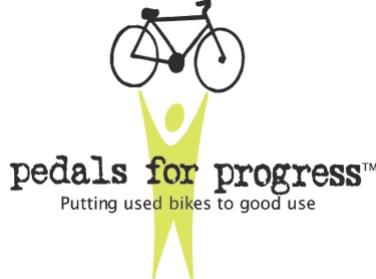
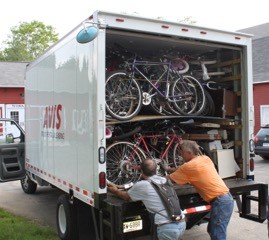 The organization also accepts working portable sewing machines and P4P seeks donations of wrenches for their overseas shops. All cash and material donations are fully deductible and a receipt will be available at the collection site.
The organization also accepts working portable sewing machines and P4P seeks donations of wrenches for their overseas shops. All cash and material donations are fully deductible and a receipt will be available at the collection site.



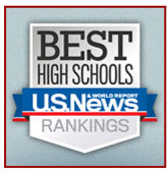 Maryland was ranked at the top of the list, with nearly 30 percent of it’s schools earning gold or silver medals. California came in second with 27 percent, and Connecticut had 25 percent.
Maryland was ranked at the top of the list, with nearly 30 percent of it’s schools earning gold or silver medals. California came in second with 27 percent, and Connecticut had 25 percent.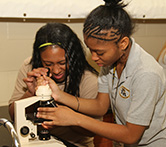

 The tournament is hosted annually by different states to ensure that the cost of running the tournament doesn't fall disproportionately on any particular state.
The tournament is hosted annually by different states to ensure that the cost of running the tournament doesn't fall disproportionately on any particular state.
 Civics First
Civics First

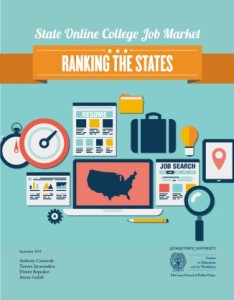
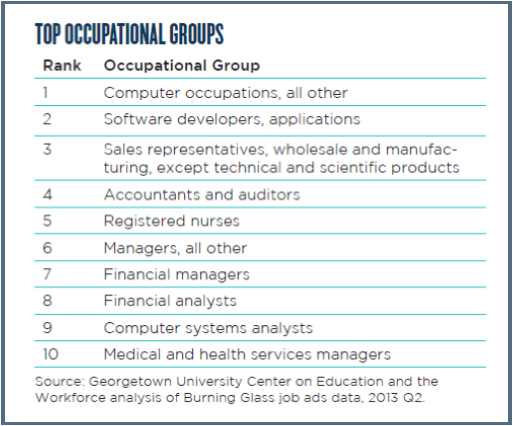 The top occupational groups reflected in the online job ads were 1) computer occupations, 2) software developers, 3) sales representatives,4) accountants and auditors, 5) registered nurses, 6) managers, 7) financial managers, 8) financial analysts, 9) computer system analysts and 10) medical and health services managers.
The top occupational groups reflected in the online job ads were 1) computer occupations, 2) software developers, 3) sales representatives,4) accountants and auditors, 5) registered nurses, 6) managers, 7) financial managers, 8) financial analysts, 9) computer system analysts and 10) medical and health services managers.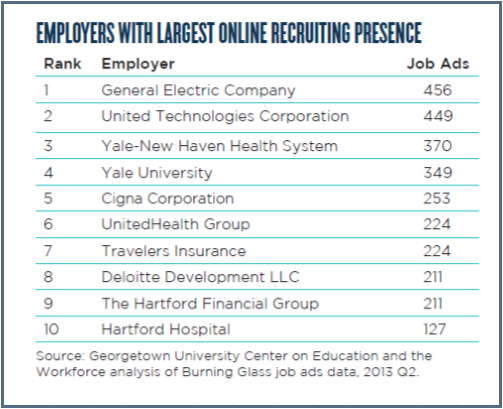 The Georgetown University Center on Education and the Workplace is affiliated with the McCourt School of Public Policy. The study was done by Anthony Carnevale, Tamara Jayasundera, Dmitrirepnikov and Artem Gulish.
The Georgetown University Center on Education and the Workplace is affiliated with the McCourt School of Public Policy. The study was done by Anthony Carnevale, Tamara Jayasundera, Dmitrirepnikov and Artem Gulish.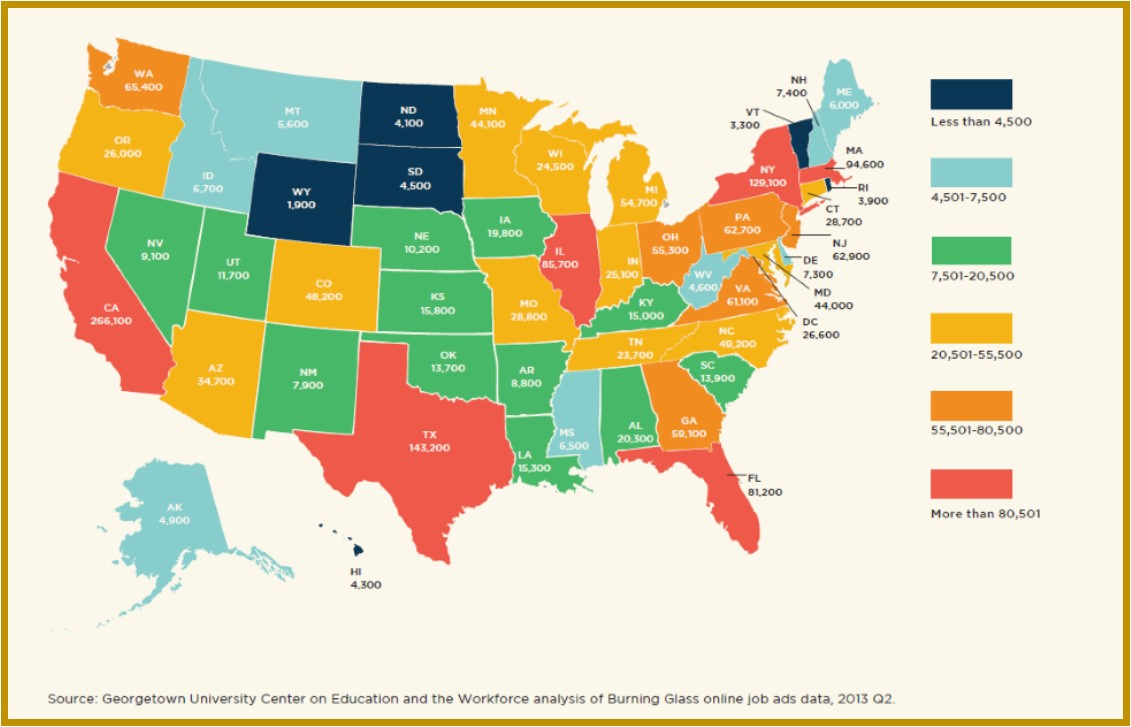
 The top 15
The top 15 
 Factors considered in the analysis include:
Factors considered in the analysis include: Among
Among 


 Often referred to as a Tech Ethicist,
Often referred to as a Tech Ethicist, 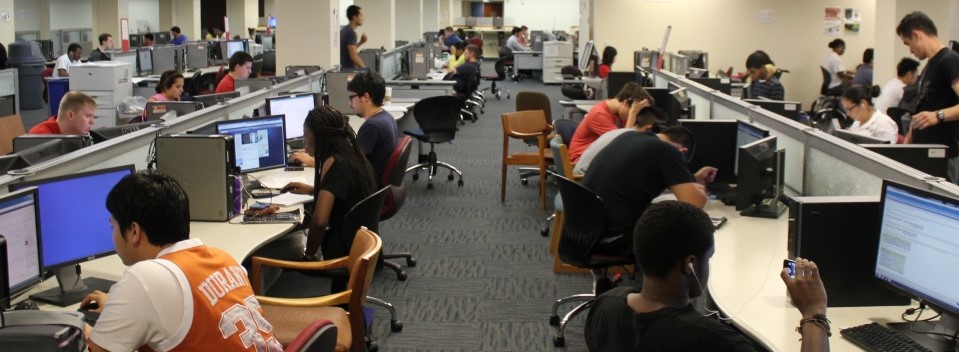
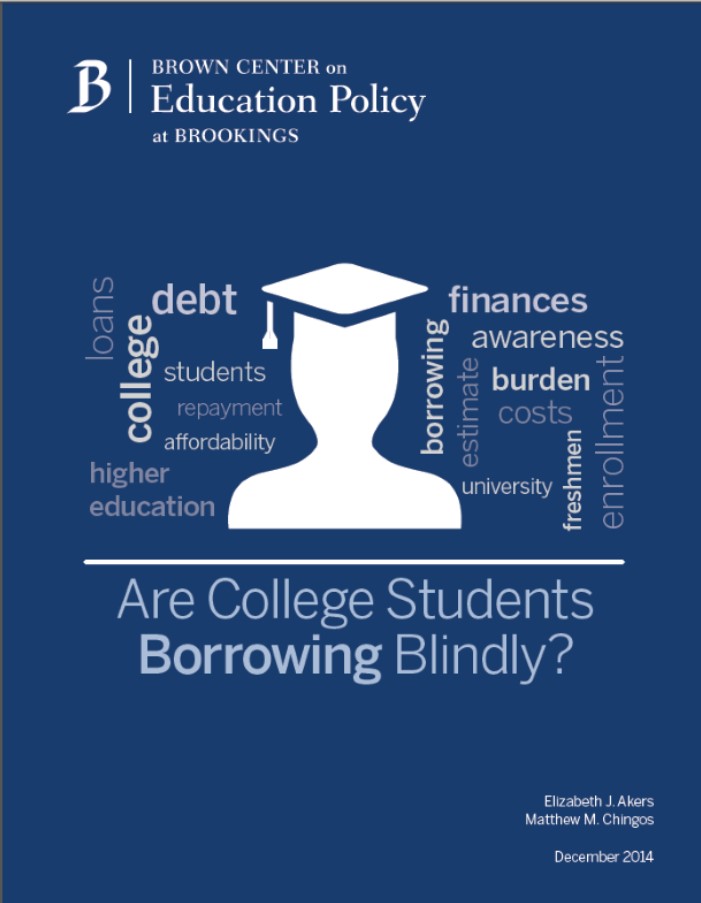
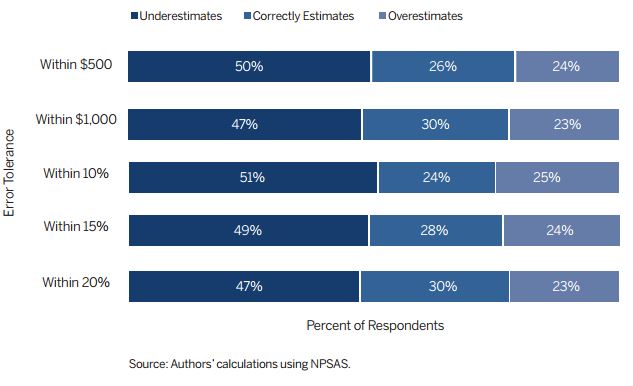
 The report also concludes by noting that “many students look back on their educational experiences with some regret about the financial circumstances. Some wish they had not gone to college in the first place, while others wish they had borrowed less or earned a different degree. The lack of literacy about the personal finances of college going is almost certainly leading some students into decisions that they later come to regret. The problem with the lack of financial savvy among enrolled college students is that the consequences of their decisions come as a surprise to them once it’s too late.”
The report also concludes by noting that “many students look back on their educational experiences with some regret about the financial circumstances. Some wish they had not gone to college in the first place, while others wish they had borrowed less or earned a different degree. The lack of literacy about the personal finances of college going is almost certainly leading some students into decisions that they later come to regret. The problem with the lack of financial savvy among enrolled college students is that the consequences of their decisions come as a surprise to them once it’s too late.”


























